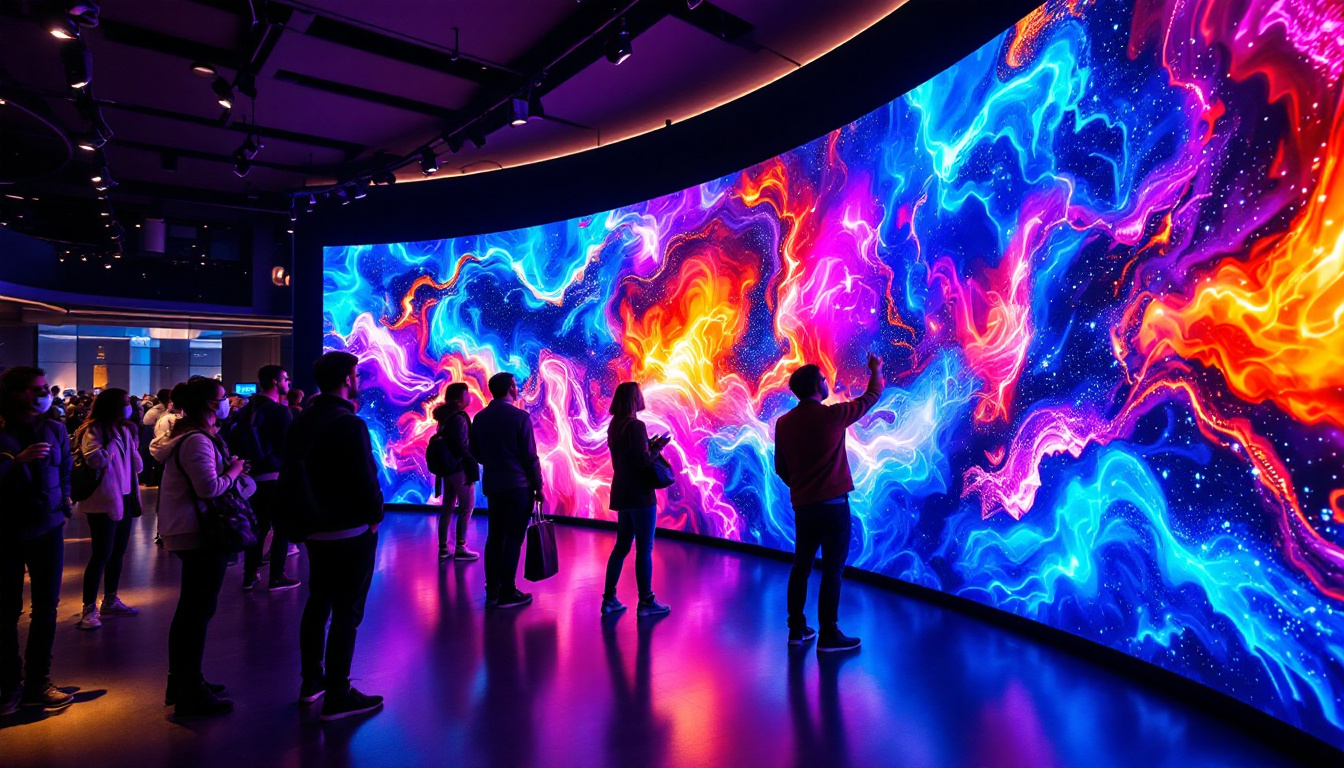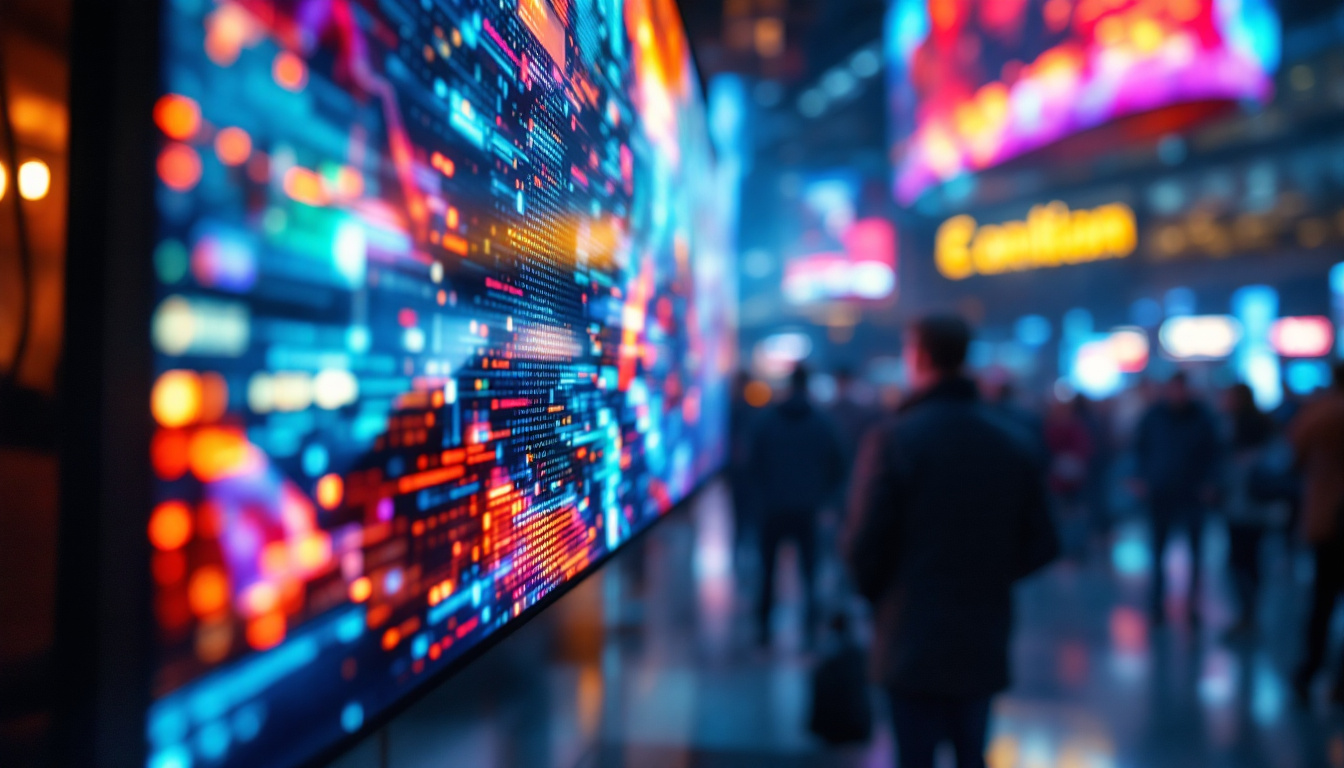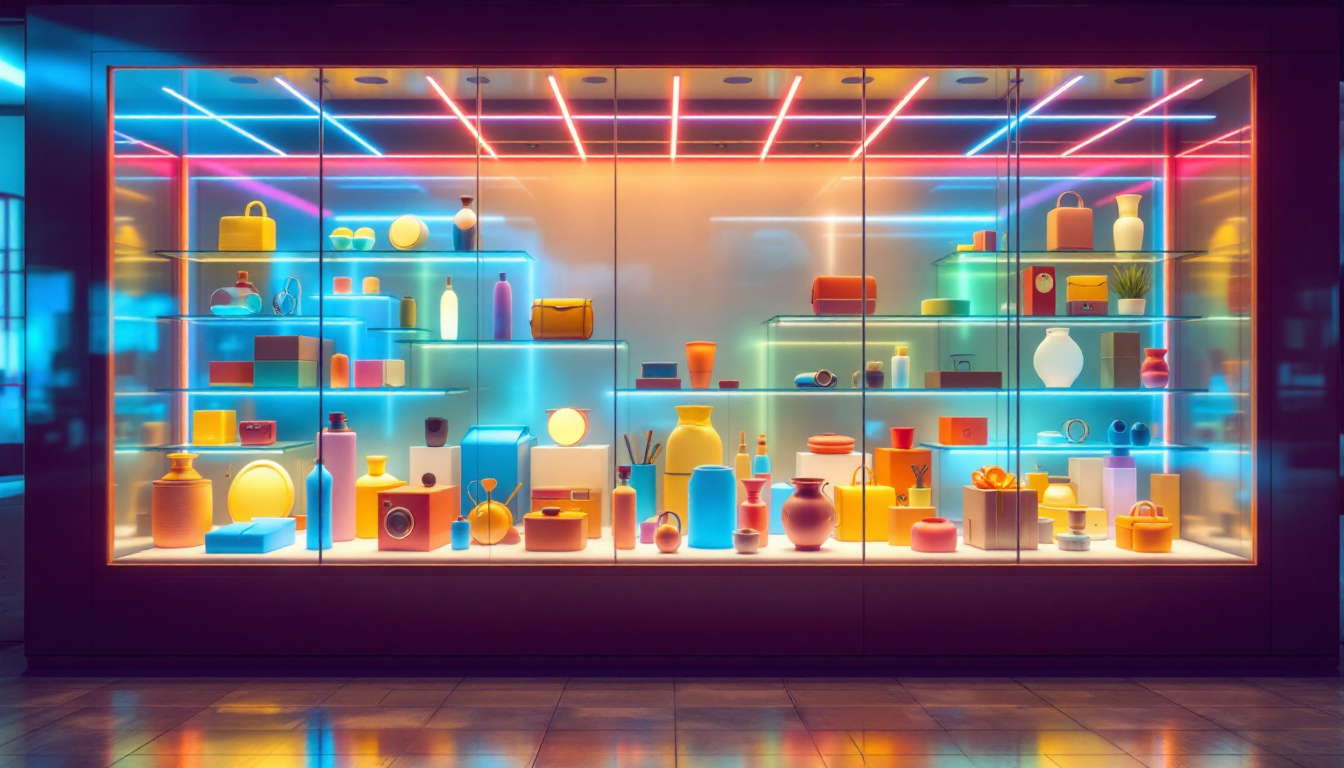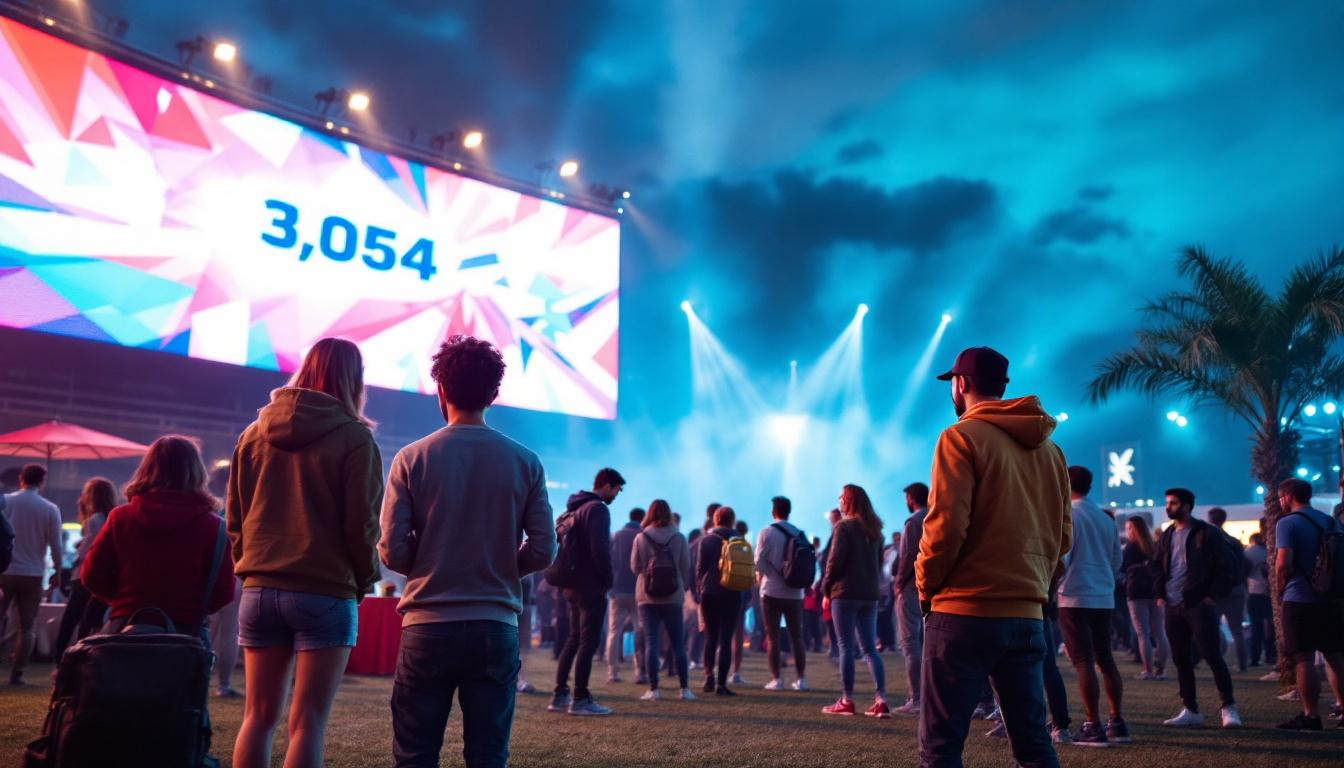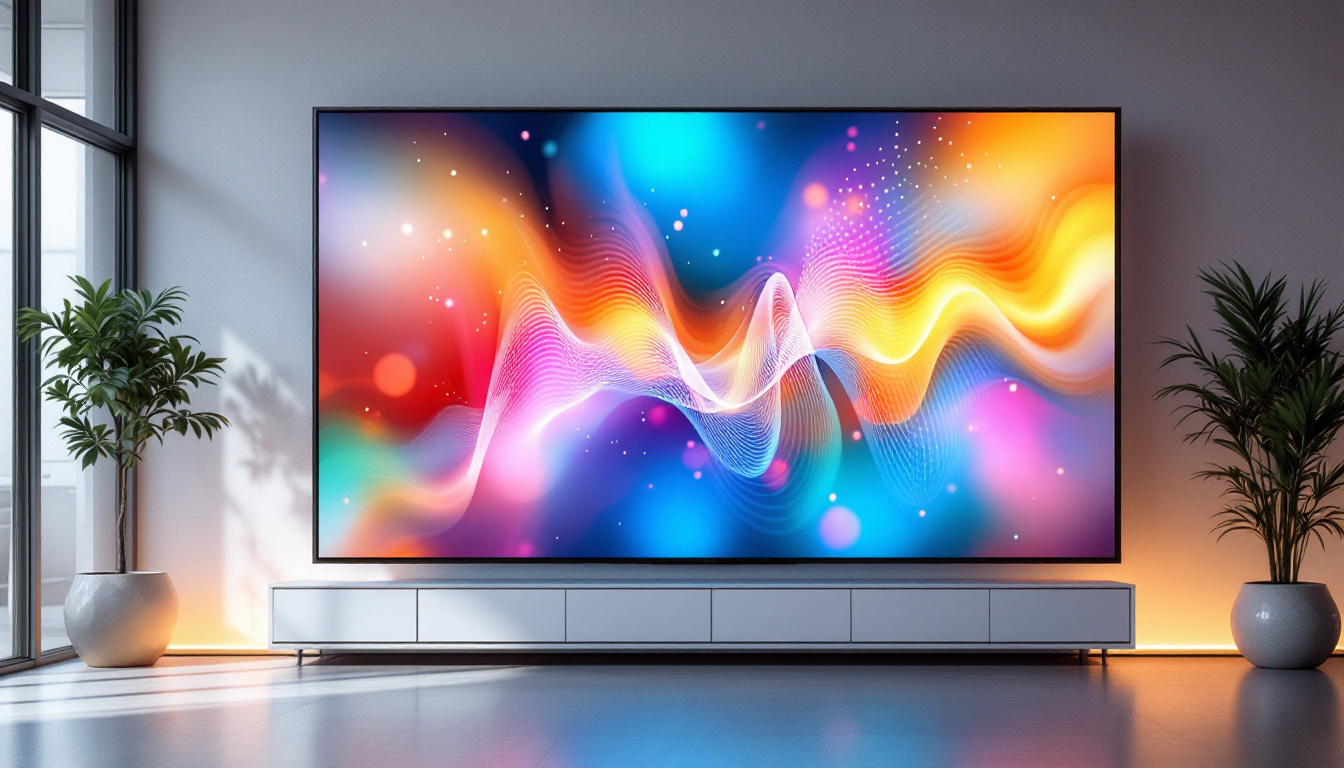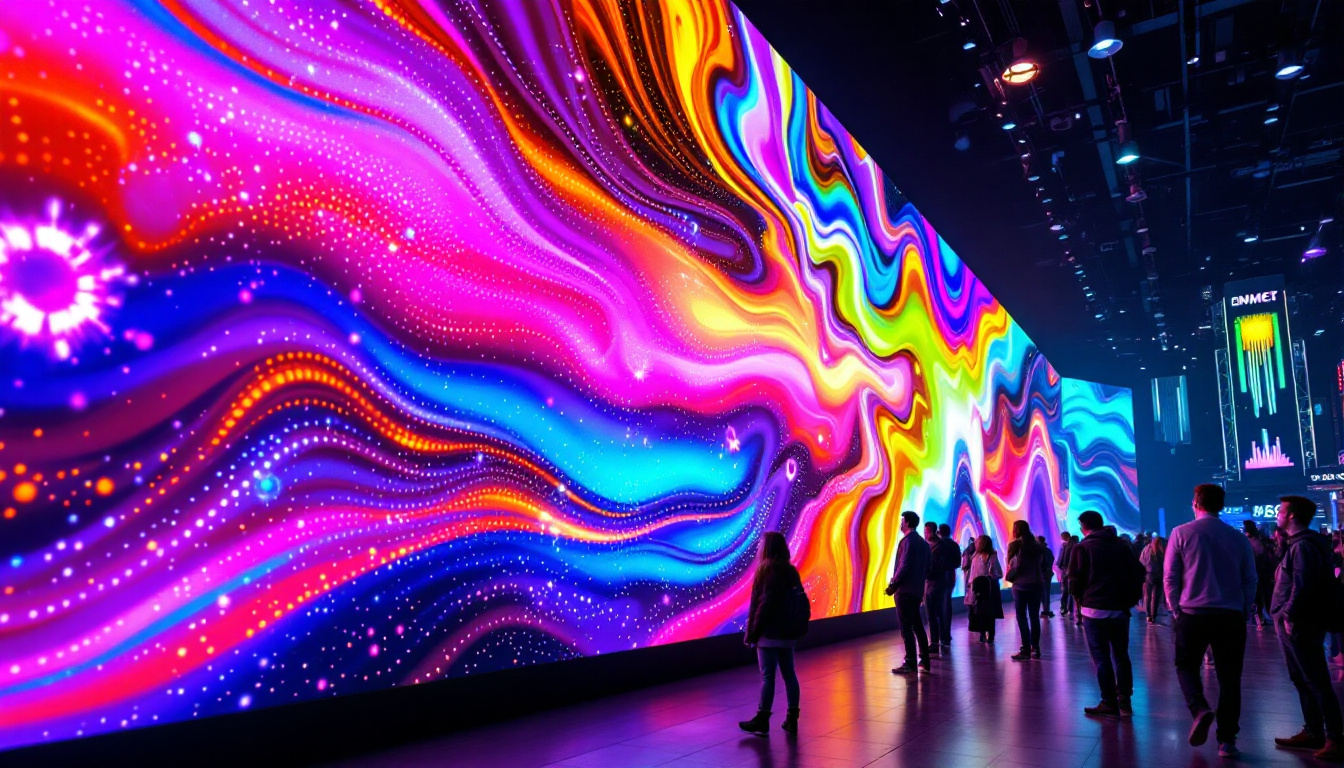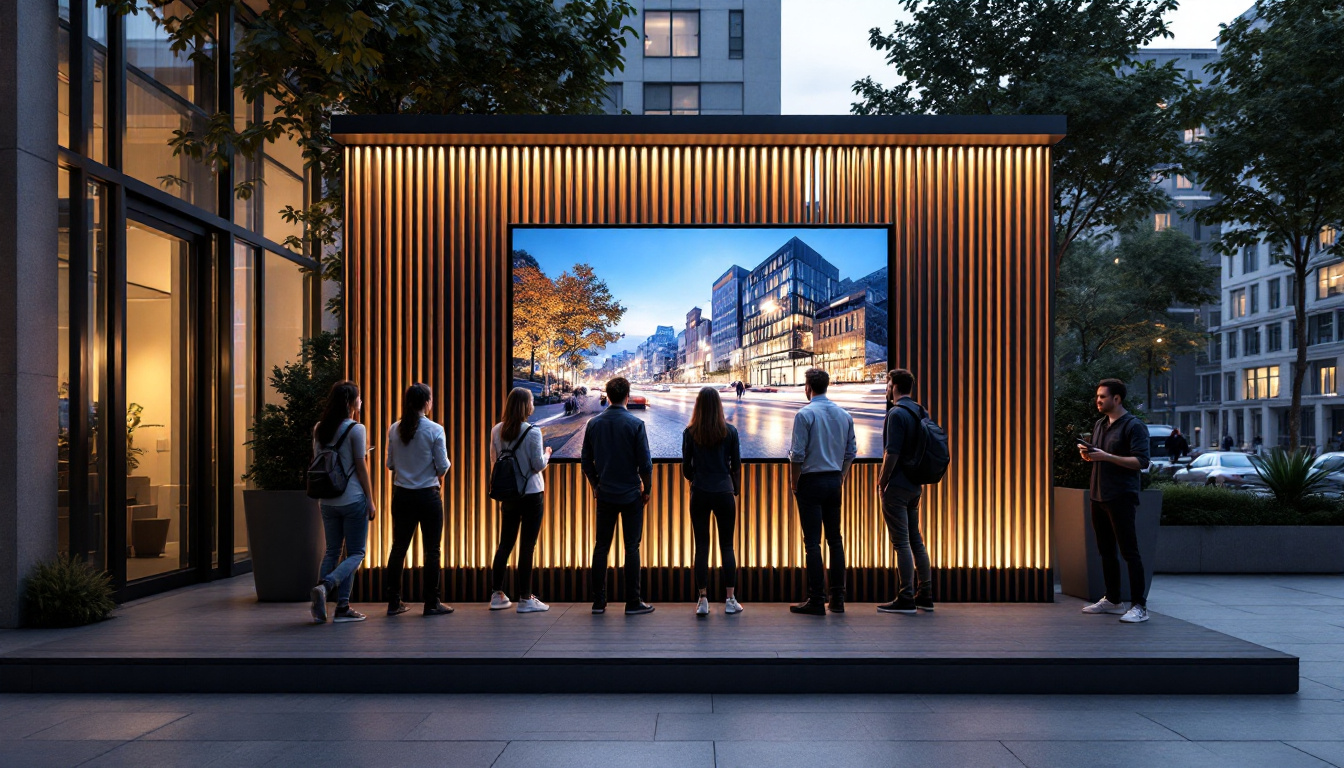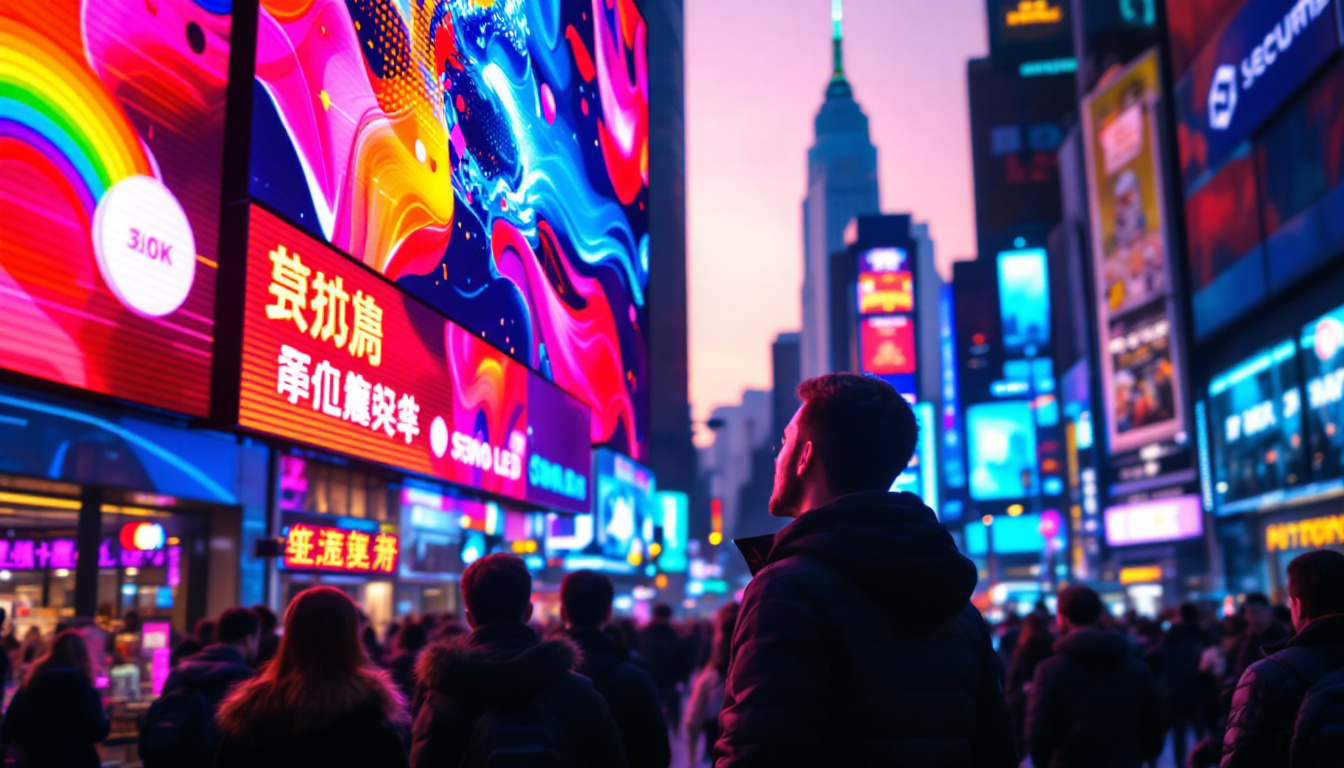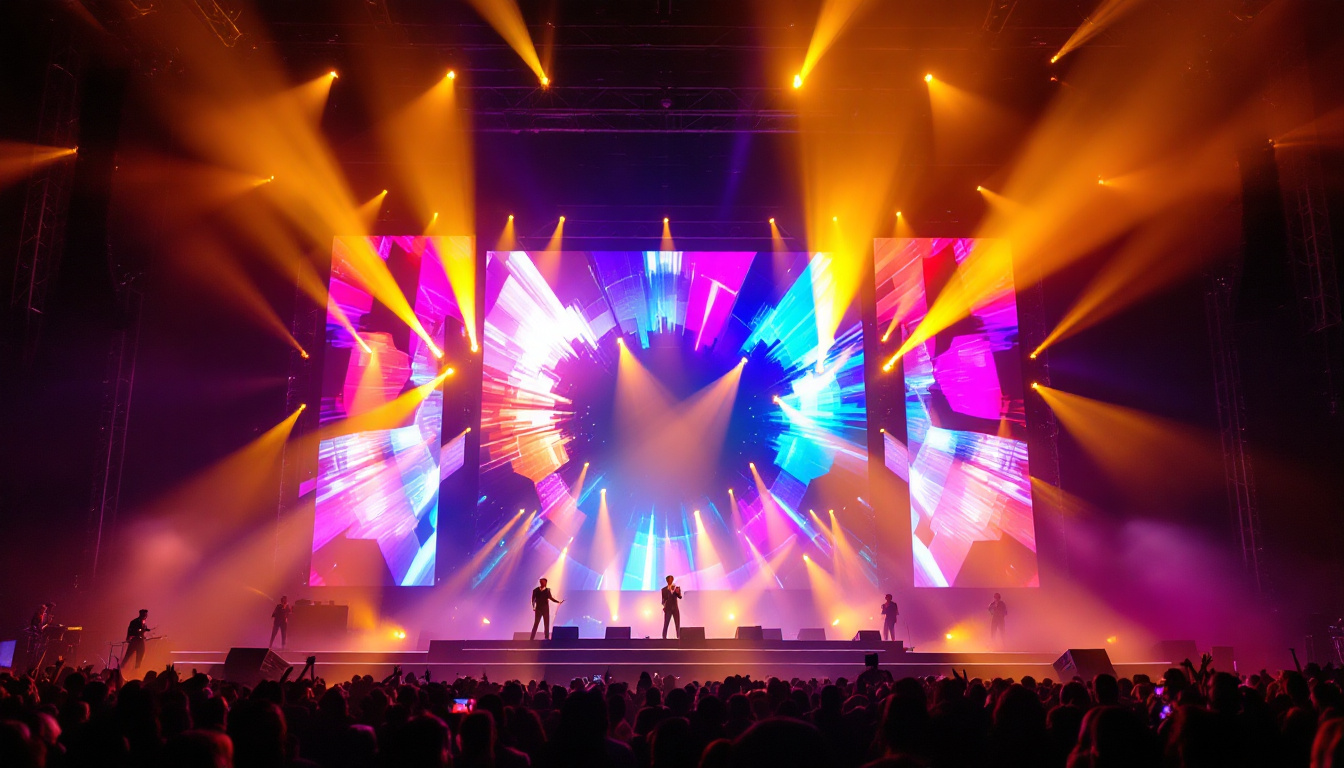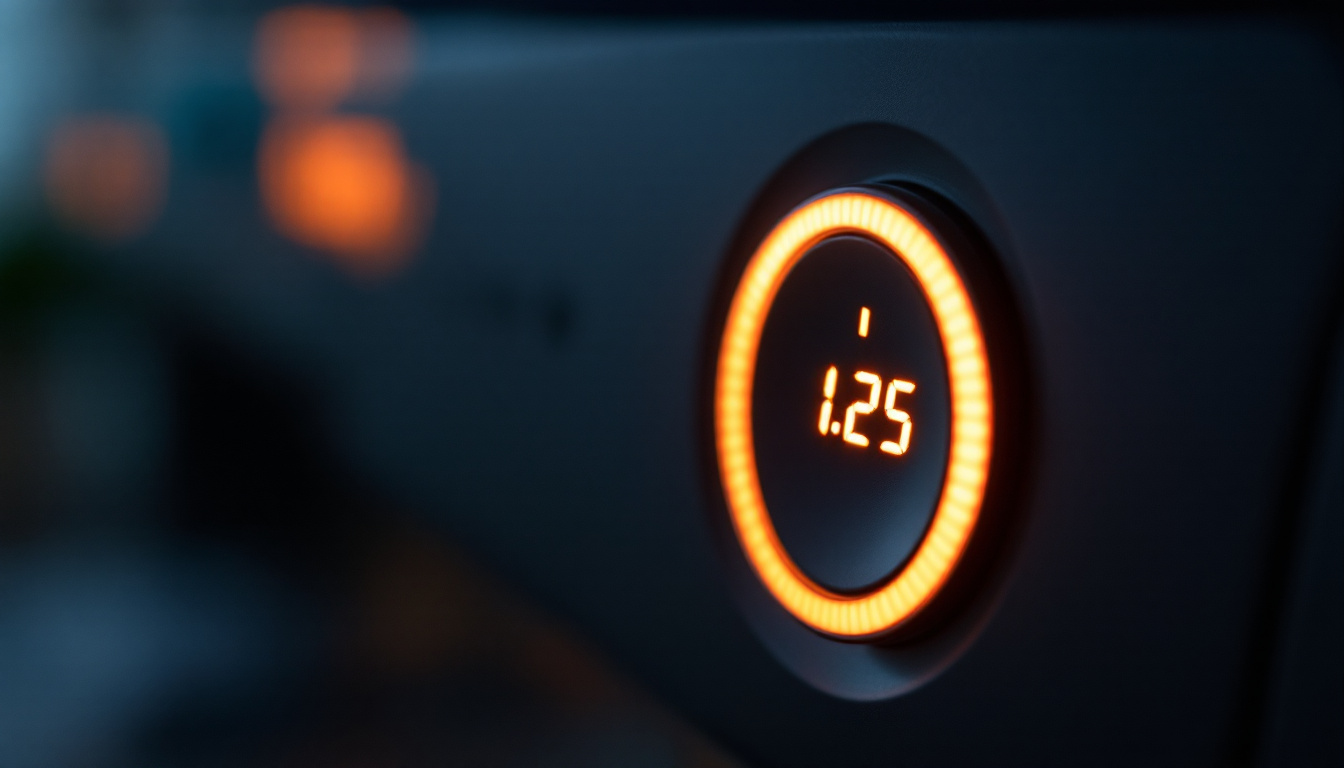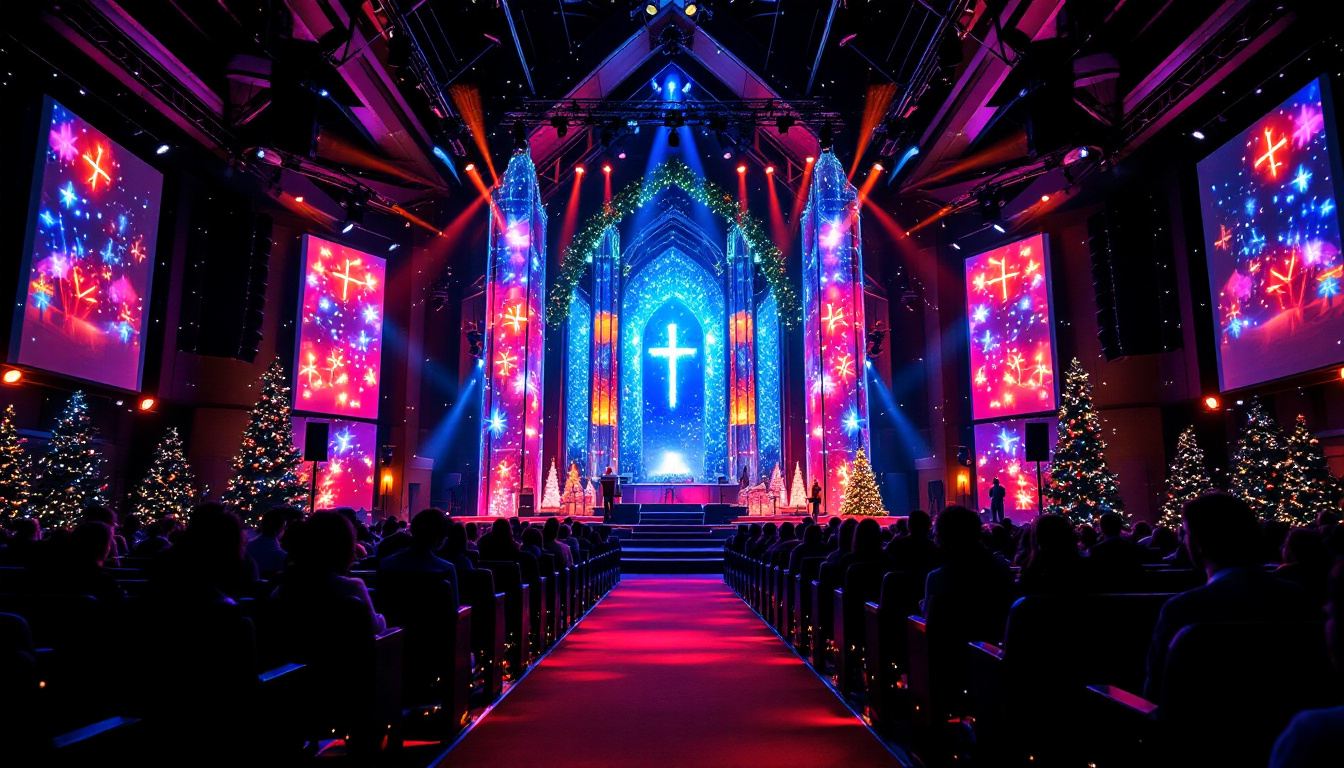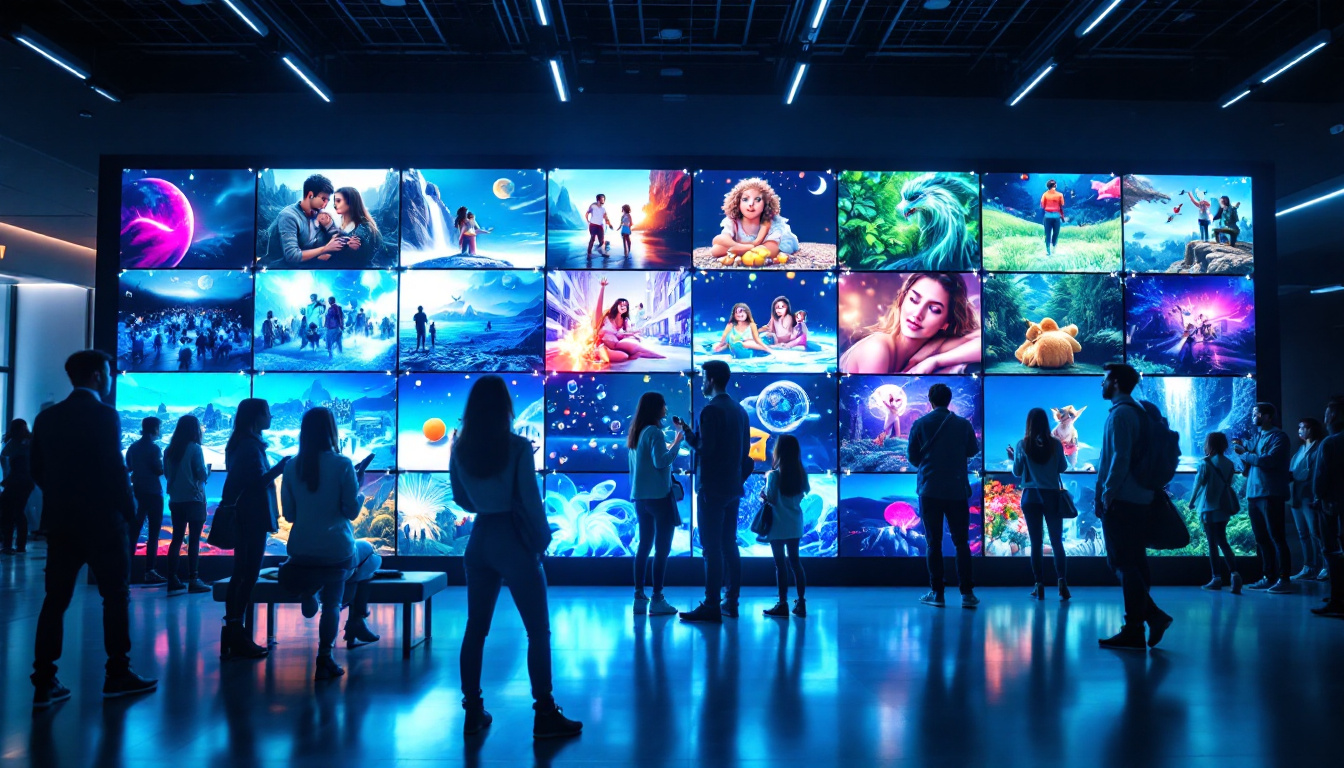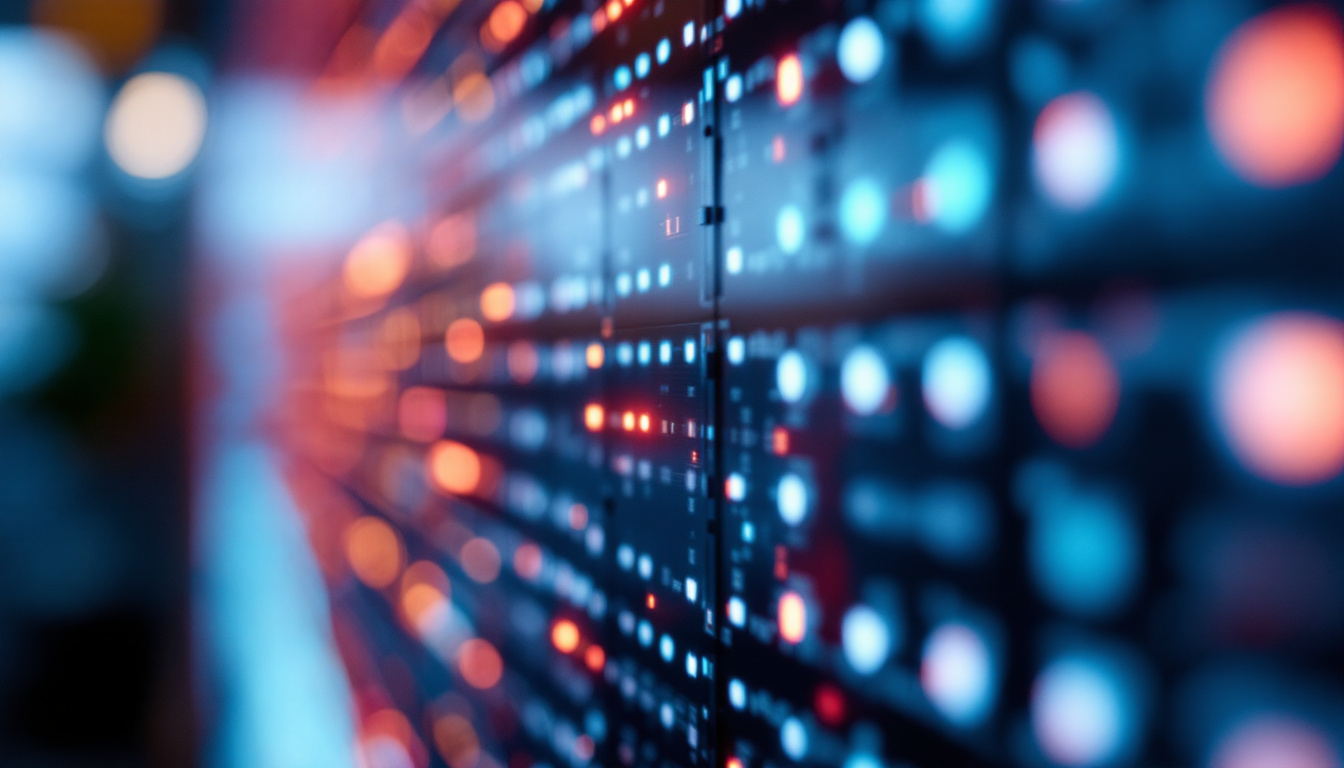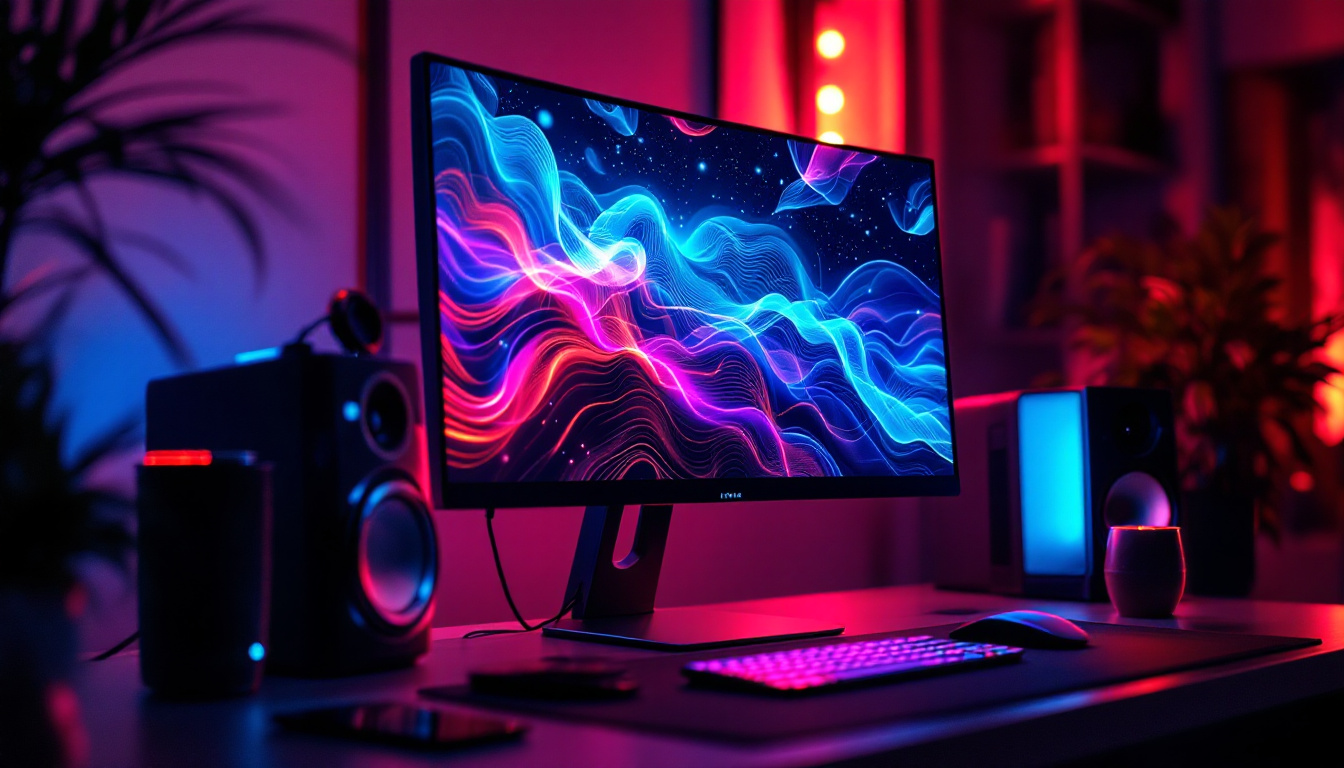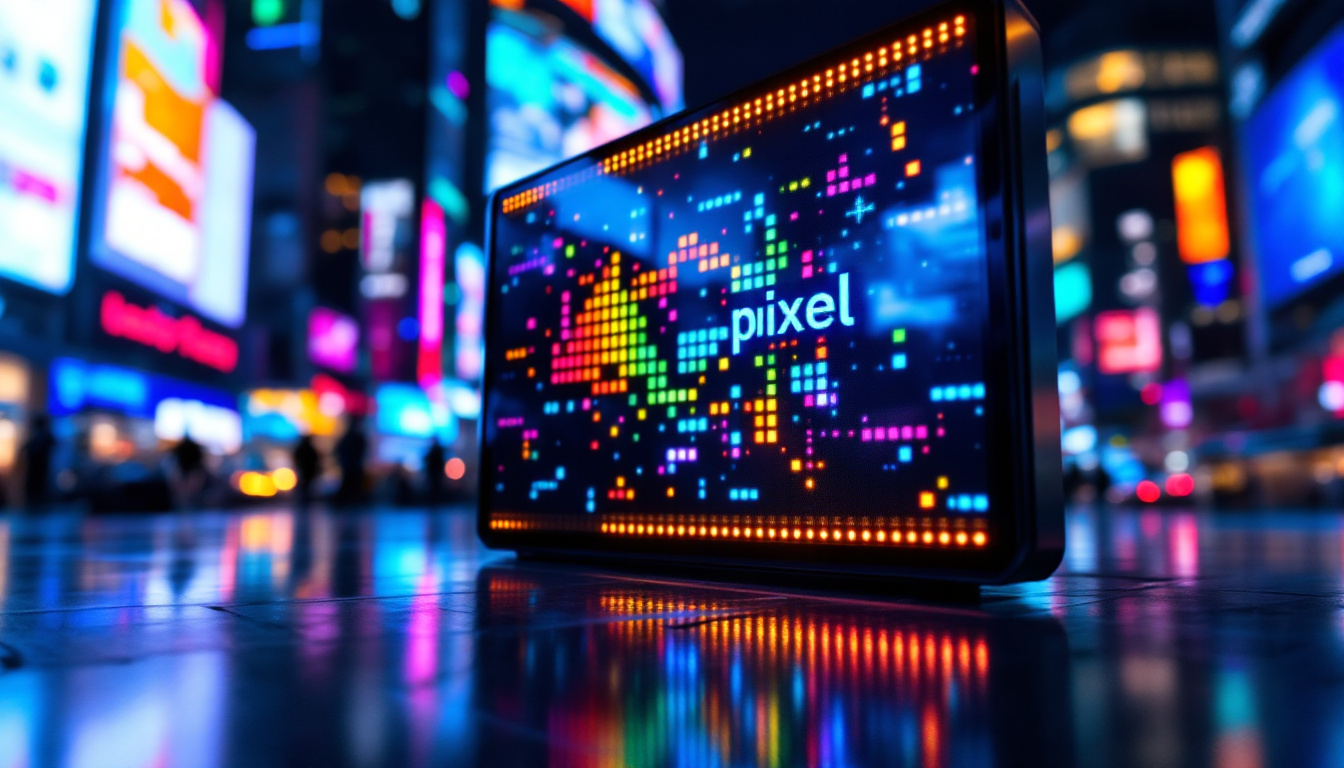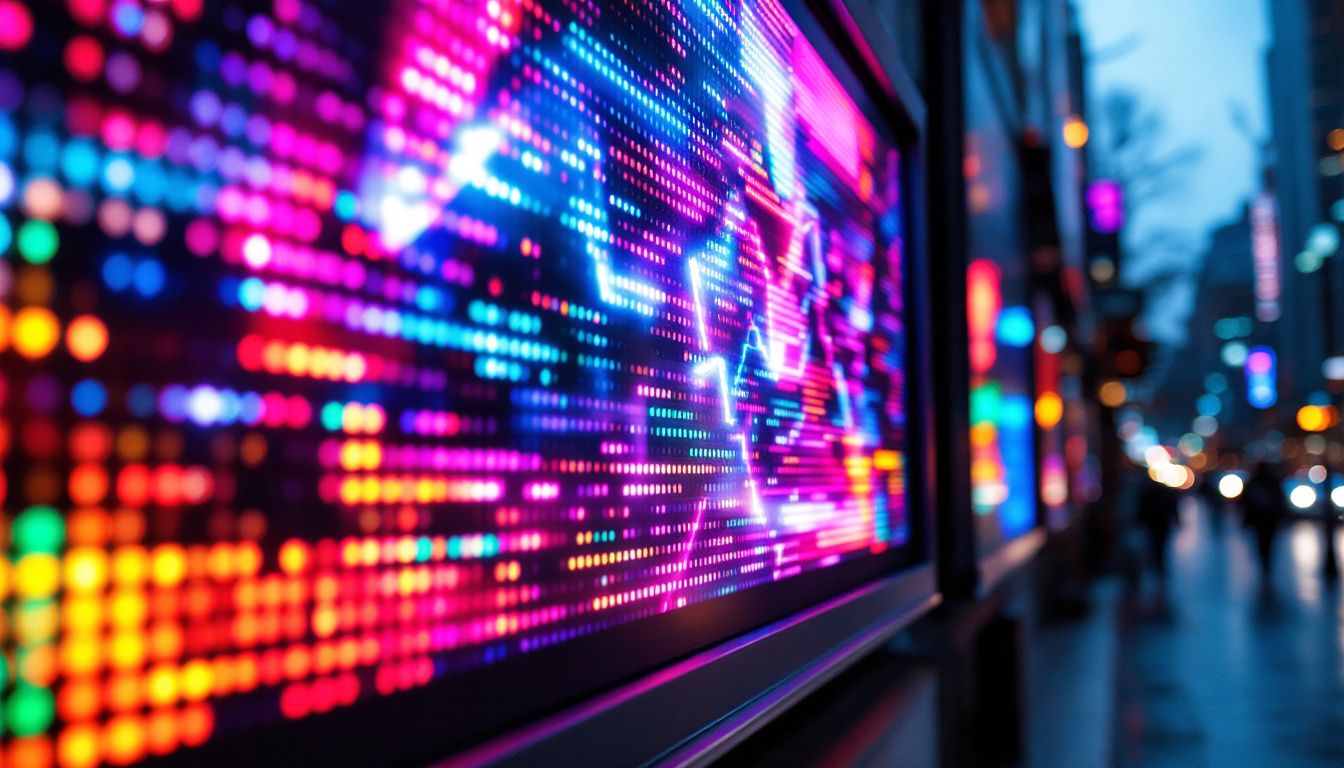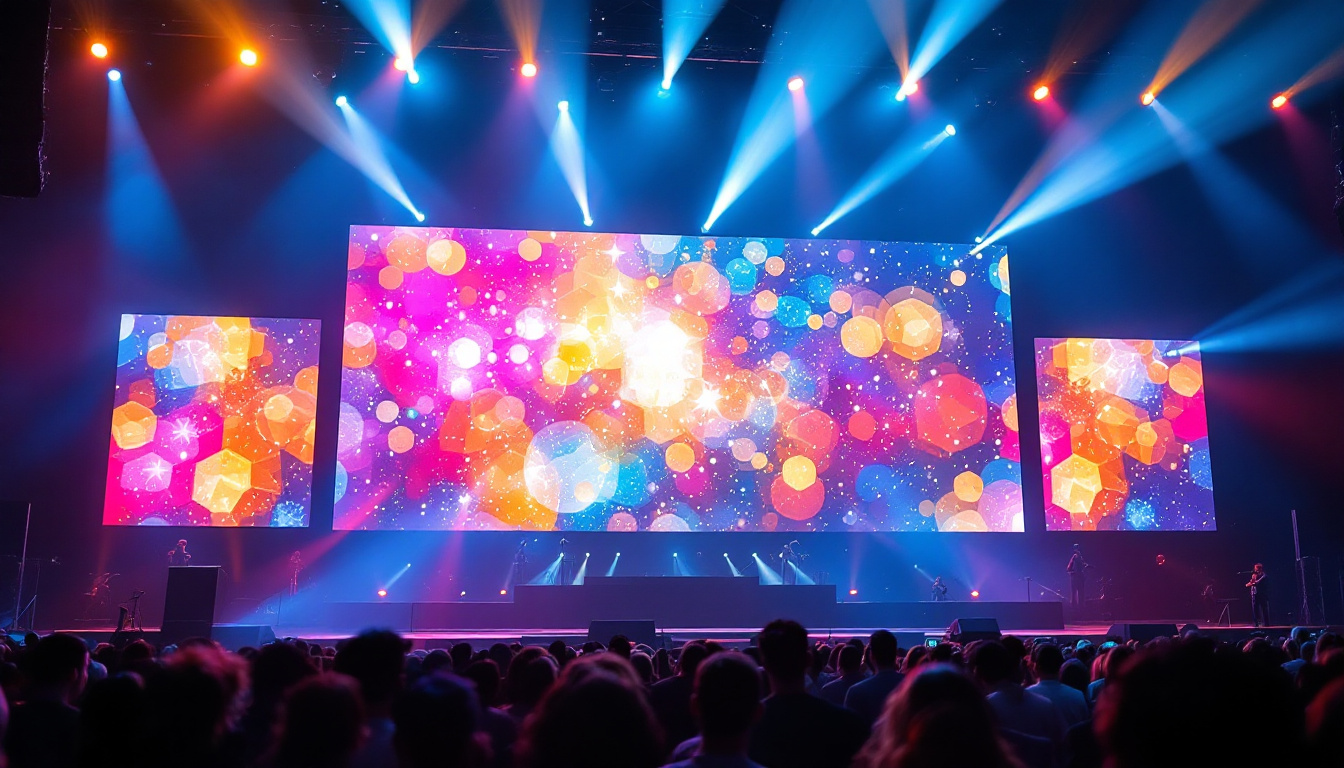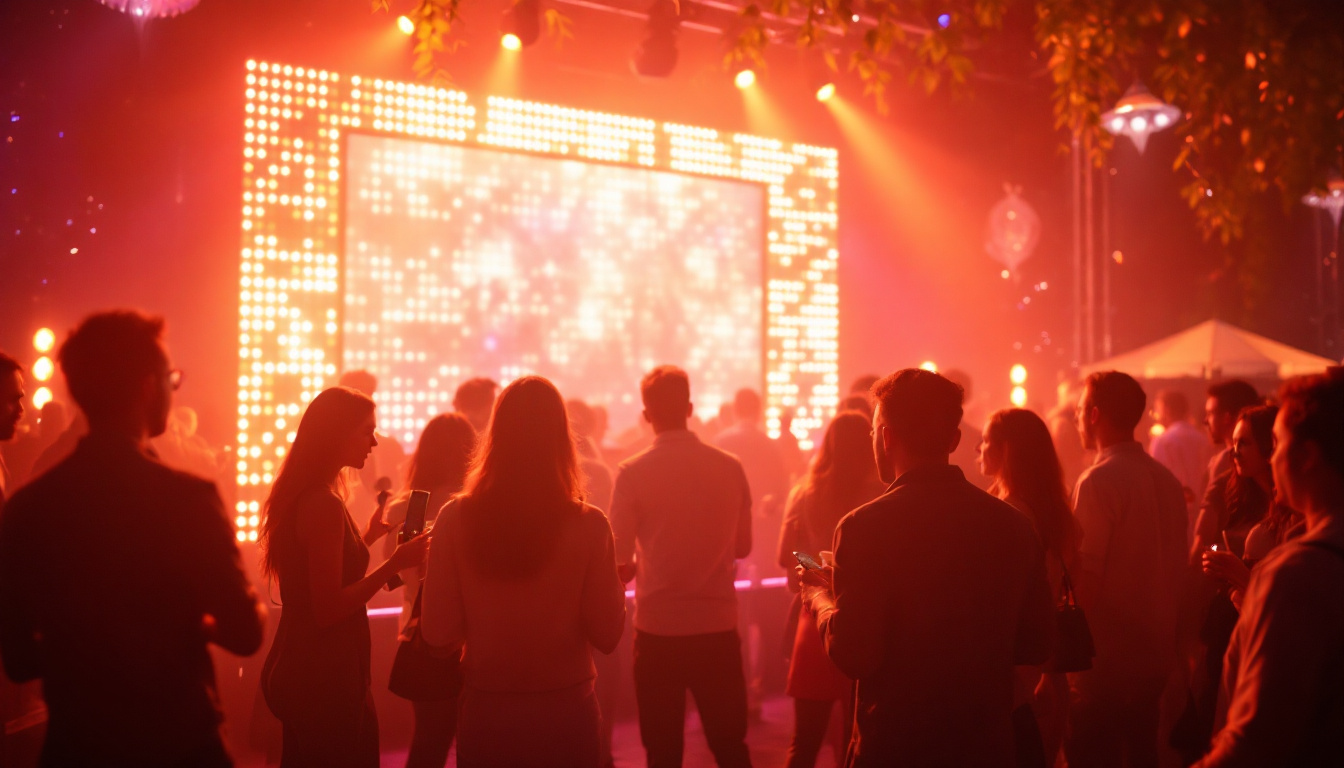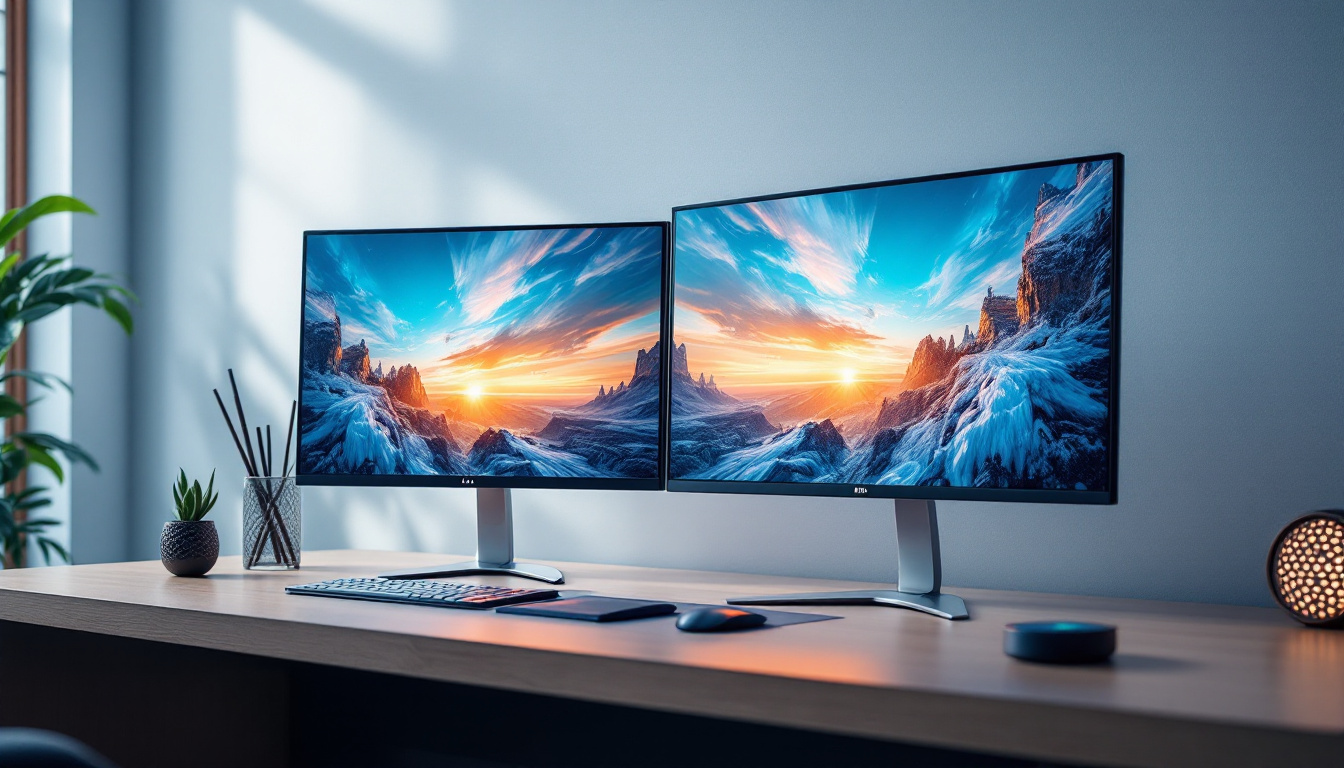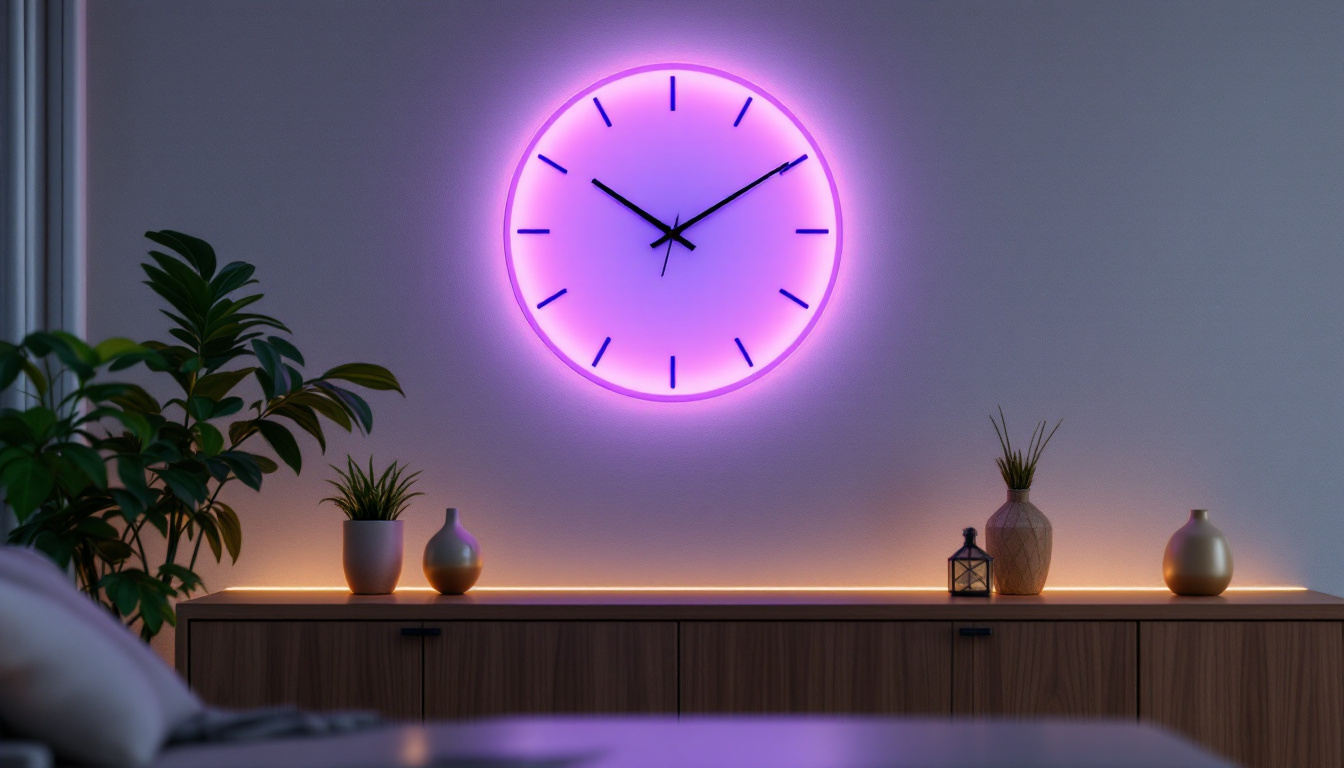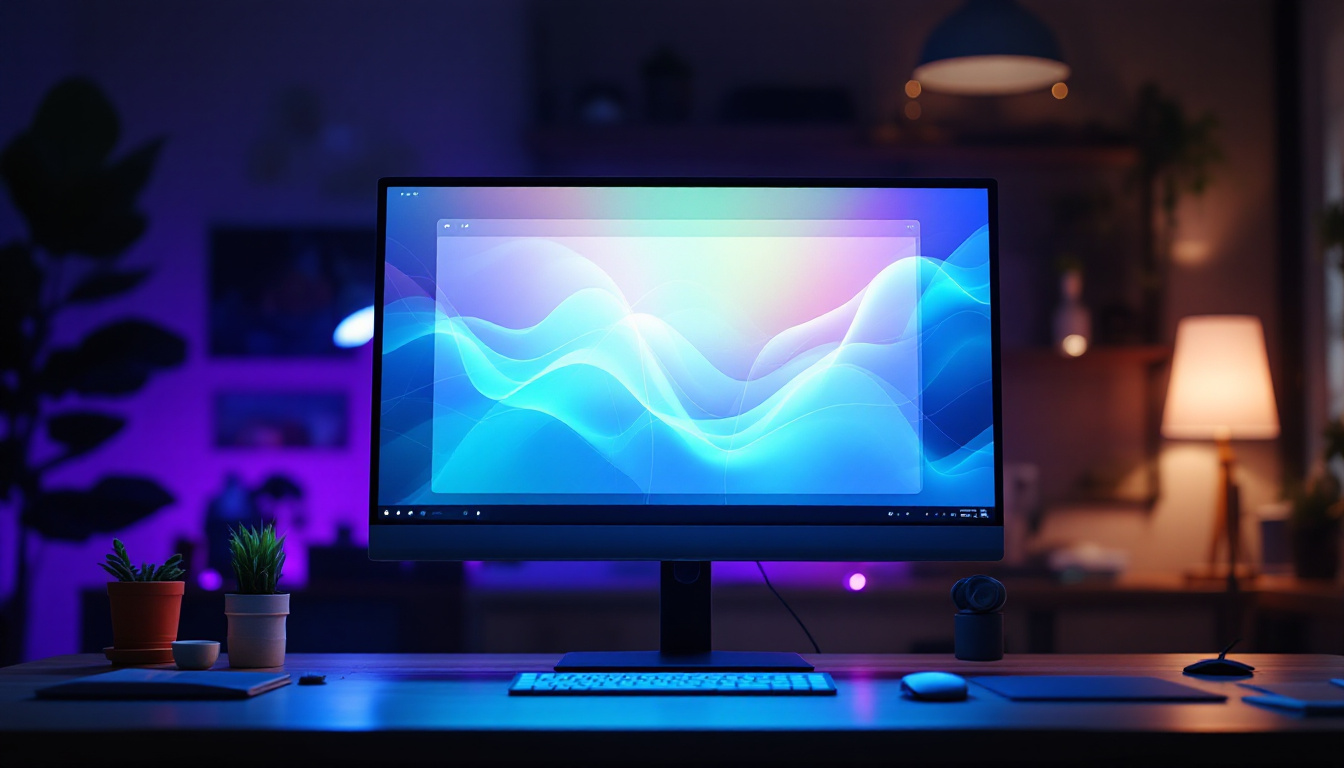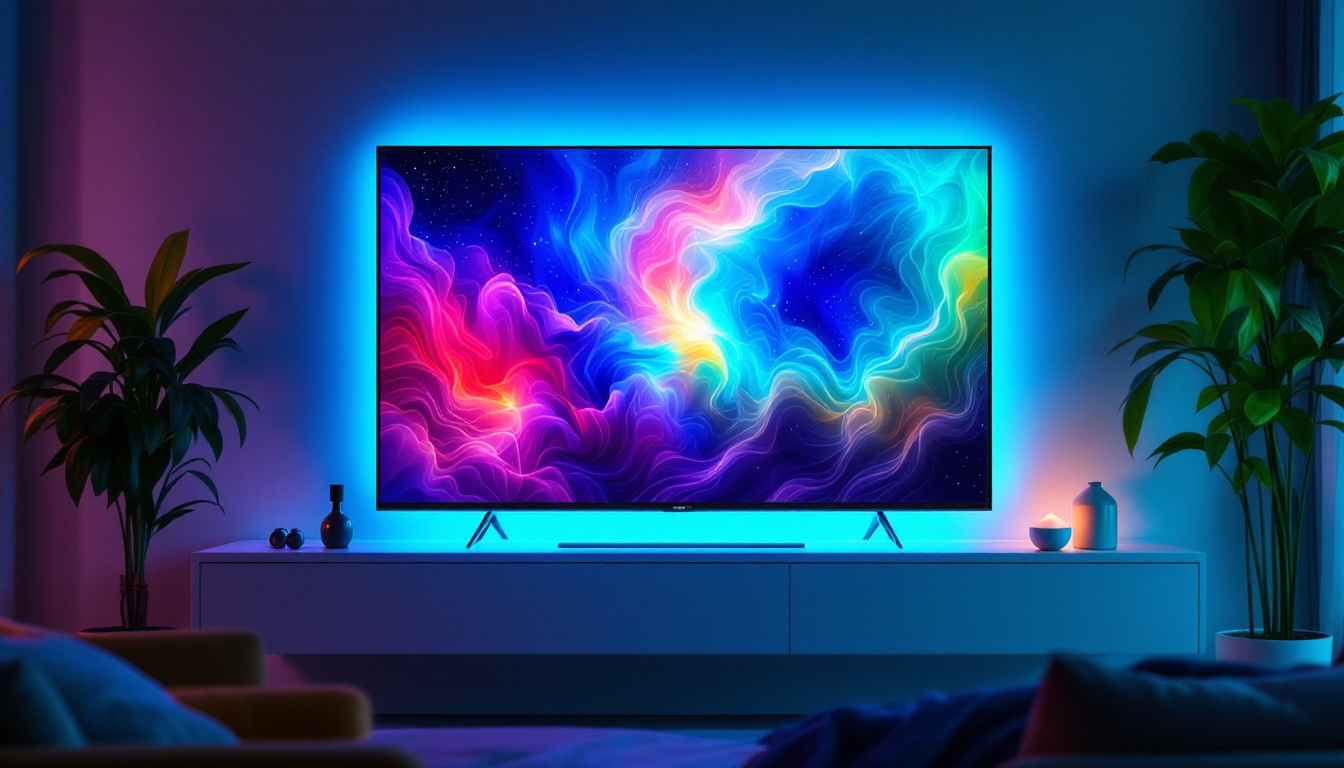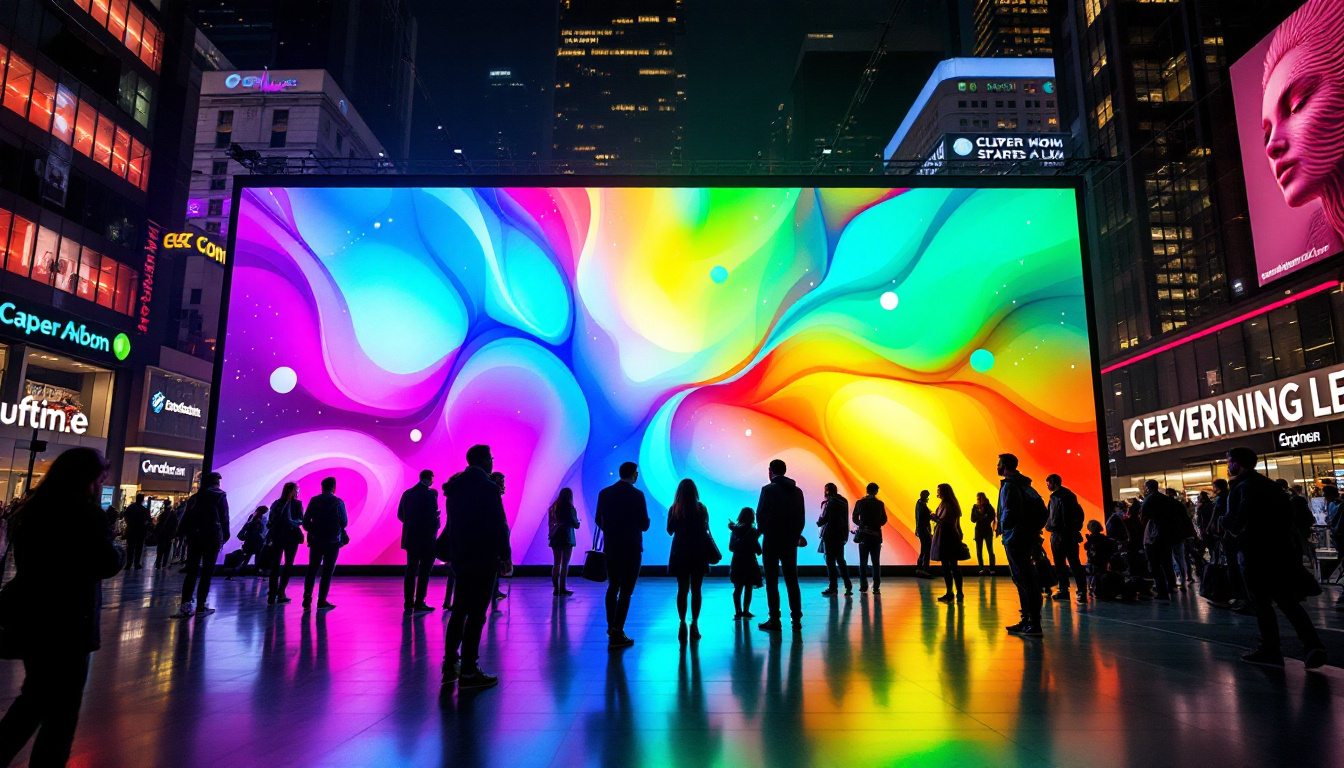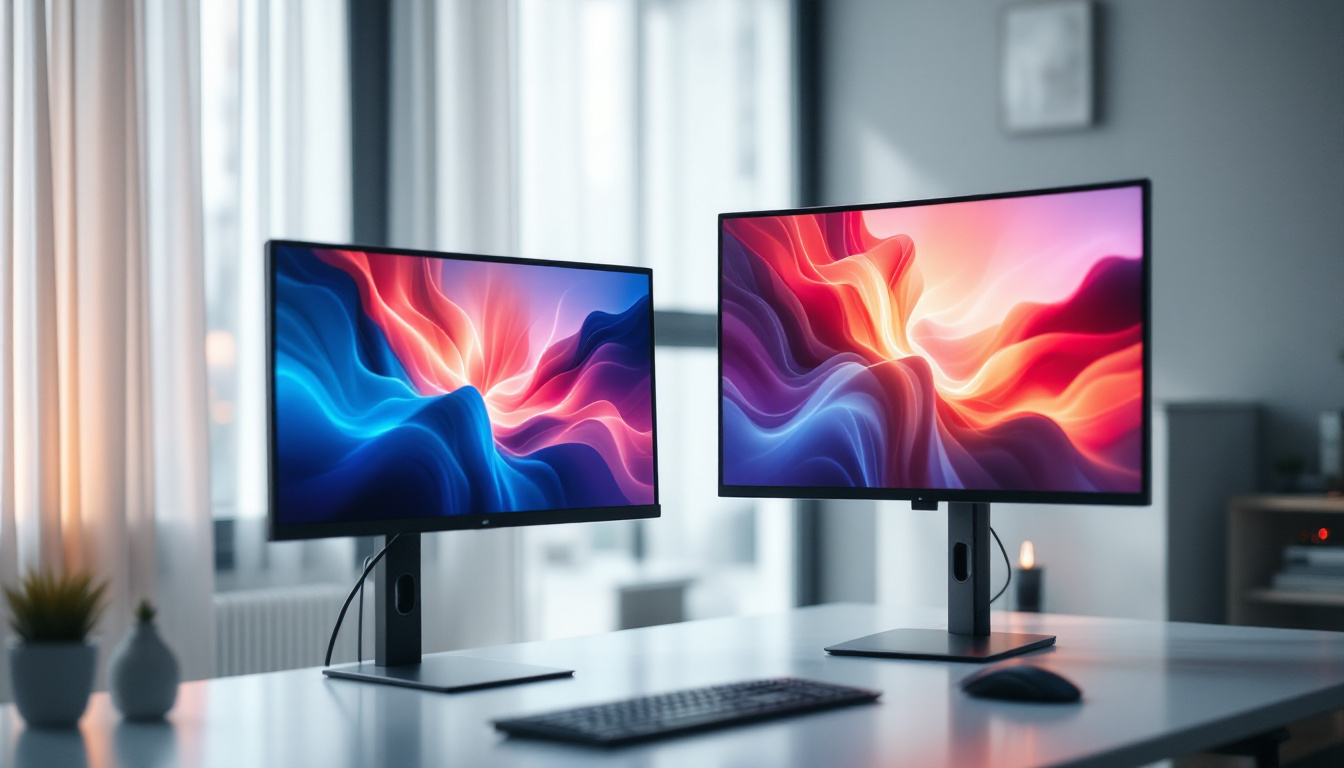Curved LED Screen: LED Display Explained
In the ever-evolving world of technology, the demand for innovative display solutions continues to rise. Among these advancements, curved LED screens have emerged as a prominent choice for various applications, ranging from advertising to entertainment. This article delves into the intricacies of curved LED displays, exploring their technology, benefits, applications, and future potential.
Understanding LED Technology
Light Emitting Diodes (LEDs) have transformed the way visuals are presented. Unlike traditional displays that utilize backlighting, LEDs emit light directly, offering vibrant colors and deeper contrasts. This technology is at the heart of curved LED screens, making them an attractive option for both indoor and outdoor environments.
How LED Displays Work
The fundamental operation of LED displays revolves around the arrangement of individual LED bulbs. These bulbs can be grouped into pixels, each capable of producing a range of colors by adjusting the intensity of the red, green, and blue (RGB) components. When these pixels are combined, they create a full-color image that can be viewed from various angles, a key feature that enhances the viewing experience.
Curved LED screens take this technology a step further by bending the display surface. This curvature allows for a more immersive viewing experience, as it can wrap around the viewer’s field of vision, creating a sense of depth and engagement that flat screens cannot achieve.
Types of LED Displays
There are several types of LED displays, each serving different purposes. The most common types include:
- Direct View LED (DVLED): These displays consist of individual LEDs that form the entire screen, making them ideal for large-scale installations.
- LED Backlit LCD: This type uses LEDs to backlight an LCD panel, providing better brightness and color accuracy compared to traditional LCDs.
- Organic LED (OLED): Utilizing organic compounds, OLED displays offer superior color reproduction and contrast, although they are typically not used in large-scale formats.
The Advantages of Curved LED Screens
Curved LED screens offer a multitude of benefits that make them a preferred choice in various sectors. Their unique design not only enhances aesthetics but also improves functionality in several ways.
Enhanced Viewing Experience
One of the most significant advantages of curved LED screens is the enhanced viewing experience they provide. The curvature of the screen allows for a wider field of view, which is particularly beneficial in large venues such as stadiums and auditoriums. Viewers seated at the edges of the audience can still enjoy a clear and immersive experience, as the curvature minimizes distortion and maintains image integrity.
Moreover, the curved design helps to reduce glare from ambient light, making it easier to see the content displayed. This feature is especially valuable in environments with high levels of natural light, such as shopping malls or outdoor events.
Space Efficiency
Curved LED screens can also optimize space utilization. Their design allows for creative installations that can fit into unconventional spaces, such as corners or columns. This flexibility is particularly advantageous in retail environments, where maximizing floor space is crucial for displaying products effectively.
Additionally, the seamless nature of curved screens means that they can be combined to form larger displays without visible gaps, creating a more cohesive visual experience. This is particularly appealing for businesses looking to make a bold statement with their advertising or branding.
Improved Engagement
Curved LED screens are known for their ability to capture attention. The immersive nature of the display draws viewers in, making it an effective tool for marketing and presentations. Research has shown that audiences are more likely to engage with content presented on a curved screen compared to traditional flat displays.
This heightened engagement can lead to improved retention of information, making curved LED screens a valuable asset in educational settings, corporate presentations, and promotional events.
Applications of Curved LED Screens
The versatility of curved LED screens allows them to be utilized across various industries. From entertainment to corporate environments, their applications are diverse and impactful.
Entertainment and Events
In the entertainment industry, curved LED screens have become a staple at concerts, festivals, and theatrical performances. Their ability to create dynamic visuals that envelop the audience enhances the overall experience, making events more memorable. The curvature allows for creative video mapping and effects that can transform a simple stage into an immersive environment.
Additionally, curved screens are frequently used in film and television production. They serve as backdrops that can be easily manipulated to create various settings, allowing for greater flexibility during shooting and post-production.
Retail and Advertising
Retailers have embraced curved LED screens as a powerful marketing tool. These displays can be used to showcase products in an eye-catching manner, drawing customers into stores and encouraging purchases. The dynamic content that can be displayed on curved screens allows brands to tell their stories in a visually compelling way, enhancing brand recognition and loyalty.
Moreover, the ability to create interactive experiences on curved screens can further engage customers, leading to increased foot traffic and sales. For example, retailers can incorporate touch technology, allowing customers to explore products and promotions in an interactive manner.
Corporate and Educational Use
In corporate settings, curved LED screens are increasingly used for presentations and conferences. Their ability to present information clearly to a large audience makes them ideal for meetings, training sessions, and corporate events. The immersive nature of the display can help keep participants engaged, leading to more productive discussions.
In educational institutions, curved screens can enhance learning experiences by providing a more engaging way to present information. Teachers can utilize the screens for interactive lessons, making complex subjects more accessible and enjoyable for students.
Challenges and Considerations
Despite their numerous advantages, curved LED screens also come with challenges that potential users should consider. Understanding these challenges is essential for making informed decisions about their implementation.
Cost Implications
One of the primary considerations when investing in curved LED screens is the cost. These displays tend to be more expensive than traditional flat screens, both in terms of initial investment and installation. Businesses must weigh the benefits against the financial implications to determine if a curved screen is the right choice for their needs.
Additionally, maintenance and repair costs can be higher for curved displays, particularly if specialized technicians are required for servicing. It is crucial for organizations to factor in these ongoing costs when budgeting for a curved LED screen.
Installation Complexity
The installation of curved LED screens can be more complex than that of flat screens. The curvature requires precise alignment and calibration to ensure optimal performance. This complexity may necessitate hiring professional installers, adding to the overall cost and time required for setup.
Furthermore, the structural requirements for mounting curved screens may differ from those of traditional displays. Ensuring that the installation site can accommodate the unique needs of a curved screen is essential for successful deployment.
Content Creation Challenges
Creating content for curved LED screens presents its own set of challenges. The curvature can affect how visuals are perceived, requiring designers to adapt their approach to ensure that content appears as intended. This may involve additional time and resources for content creation, particularly for businesses that wish to utilize custom graphics or animations.
Moreover, not all existing content may be suitable for curved displays, necessitating a review and potential redesign of materials to optimize them for the unique viewing experience.
The Future of Curved LED Screens
The future of curved LED screens appears promising, with advancements in technology continuing to enhance their capabilities. As the demand for immersive experiences grows, manufacturers are likely to invest in research and development to improve the functionality and affordability of these displays.
Technological Innovations
Emerging technologies, such as flexible LED panels, are paving the way for even more innovative applications of curved displays. These flexible panels can be bent and shaped to fit various environments, allowing for greater creativity in design and installation.
Additionally, advancements in resolution and color accuracy are expected to enhance the visual quality of curved LED screens. As technology continues to evolve, users can anticipate displays that offer even more stunning visuals and improved performance.
Broader Adoption Across Industries
As the benefits of curved LED screens become more widely recognized, their adoption is likely to expand across various sectors. Industries such as healthcare, transportation, and hospitality may begin to explore the potential of these displays for enhancing communication and engagement.
For instance, hospitals could utilize curved screens for patient education, providing clear and engaging information about procedures and treatments. Similarly, transportation hubs could implement curved displays for real-time updates and wayfinding, improving the overall passenger experience.
Sustainability Considerations
As sustainability becomes a priority for many organizations, the environmental impact of curved LED screens will also come under scrutiny. Manufacturers are likely to focus on developing more energy-efficient displays and exploring sustainable materials for production.
Moreover, the longevity of LED technology means that these displays can have a longer lifespan compared to traditional screens, reducing waste and the need for frequent replacements. This aspect will be increasingly important as businesses seek to align their operations with sustainable practices.
Conclusion
Curved LED screens represent a significant evolution in display technology, offering unique advantages that enhance viewing experiences across various applications. While challenges such as cost and installation complexity exist, the benefits often outweigh these considerations for many users. As technology continues to advance, the future of curved LED screens looks bright, promising even more innovative uses and improved performance.
Whether in entertainment, retail, corporate, or educational settings, curved LED screens are poised to play a crucial role in shaping how visuals are presented and experienced. Embracing this technology can lead to enhanced engagement, improved communication, and a more immersive experience for audiences everywhere.
Discover the Future of Visual Engagement with LumenMatrix
Ready to elevate your visual experience and captivate your audience like never before? Explore LumenMatrix’s comprehensive range of LED display solutions, where innovation meets functionality. From immersive Indoor LED Wall Displays to dynamic Outdoor LED Wall Displays, and from versatile Vehicle LED Displays to sleek LED Poster Displays, LumenMatrix is at the forefront of transforming environments with unparalleled clarity and impact. Embrace the revolution in visual communication with our LED Sports Displays, interactive Floor LED Displays, and the revolutionary All-in-One LED Display. Don’t just take our word for it; see for yourself how LumenMatrix is redefining the art of display technology. Check out LumenMatrix LED Display Solutions today and step into a world where your message shines brightest.

